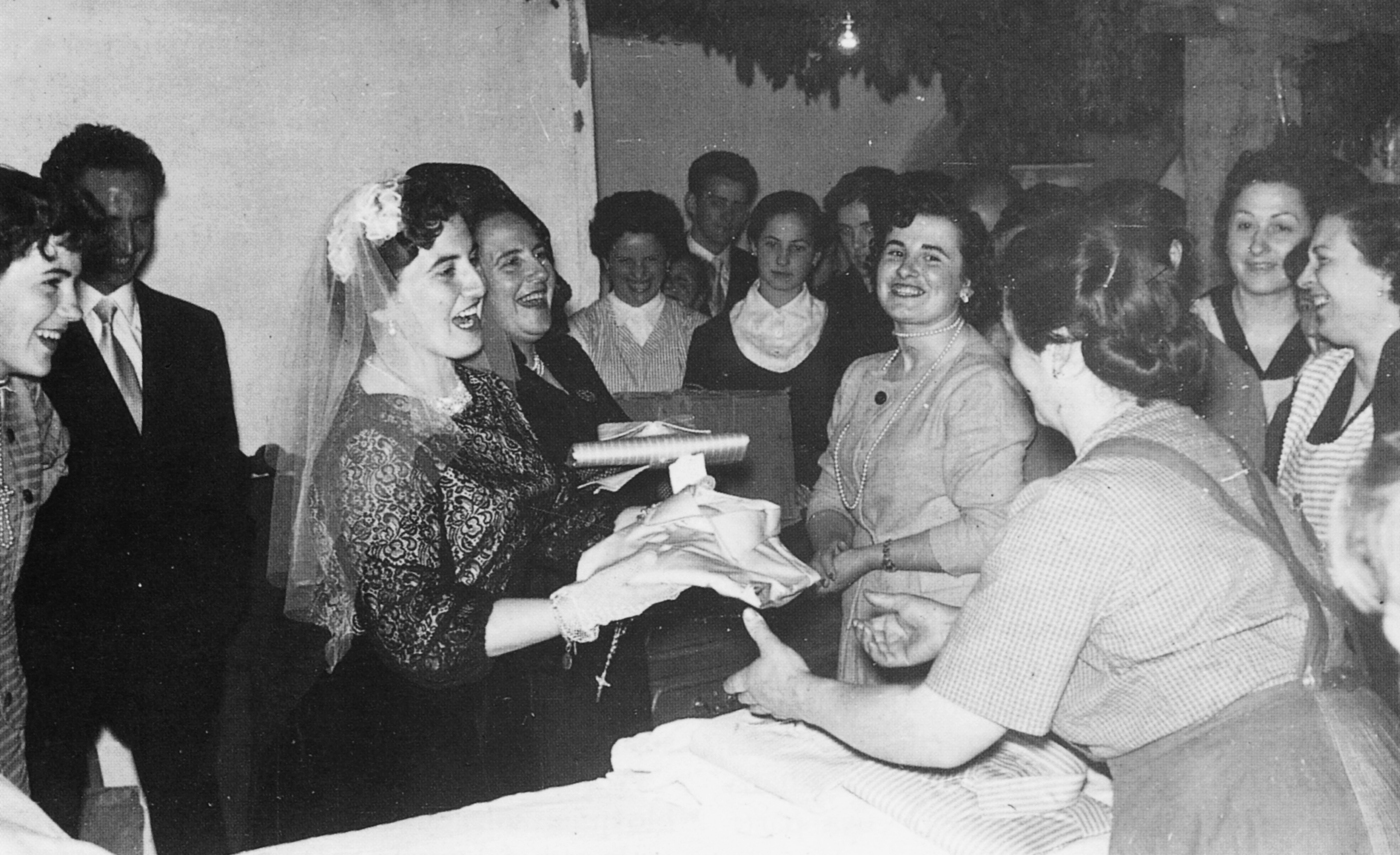Basque ethnography at a glance

Bridal trousseau carried on an ox-cart and escorted by the entire entourage. Bidegoian (Gipuzkoa), 1957. Foto Martín (Tolosa). Labayru Fundazioa Photographic Archive.
The most common current matrimonial regimes for couples who choose to marry include among others community property and separation of property. In the old days the transfer of parental property to a daughter at her marriage and the assembling of her trousseau was an issue of particular concern to the bride-to-be.
The dowry or dote was the property and/or money brought by the bride to the marriage. In our country it has been best known as arreo. Some reserve this latter name mainly for the collection of clothing and bedding gathered by the bride for her future married life, much of which would have been hand sewn by herself or her female relatives and friends, to distinguish it from the dowry. In the past girls started at a very young age to prepare their trousseau in hopes they would marry.
The ritual act of carrying the trousseau marked the entry of the new spouse to the house, known in Basque as etxe-sartzea. An embellished cart drawn by oxen was used for the purpose. Among the varied items carried, the bed and complementary furnishings for the bedroom, the spinning wheel and a mirror were never missing. Wanting to be noticed, efforts were made for the wheel shaft to squeak. The wedding entourage followed with presents for groom and bride. If a bride was especially wealthy, two and even three carts would parade one after the other driving the load.
The transportation of the trousseau from the bride’s house to the groom’s tended to be more solemn than conversely, when the beneficiary of the family house and land was her and it was him who moved in.

Bride showing her trousseau. Bidegoian (Gipuzkoa), 1957. Foto Martín (Tolosa). Labayru Fundazioa Photographic Archive.
It was customary in some localities for the former household manager to hand over to the new housewife a treasured heirloom to signal her arrival to her new abode. Great endeavours were used to introduce her to the farm bees.
A party was hosted in order to show off the trousseau. A careful inventory and accounting of the assets contributed by the incoming spouse was kept. This custom faded away over the years finally limiting itself to exhibiting the trousseau and the bedroom for the newly-weds with no additional formalities. The bride, her mother and perhaps a neighbour would usually host it for the bride’s friends and female guests to the wedding. The trousseau was displayed before or on the same day of the wedding.
Popular representations of traditional weddings today include the carrying of the bridal trousseau in a procession.
Segundo Oar-Arteta – Etniker Bizkaia – Etniker Euskalerria Groups
Translated by Jaione Bilbao – Language Department – Labayru Fundazioa
Reference for further information: Rites from Birth to Marriage, part of the Ethnographic Atlas of the Basque Country collection.

